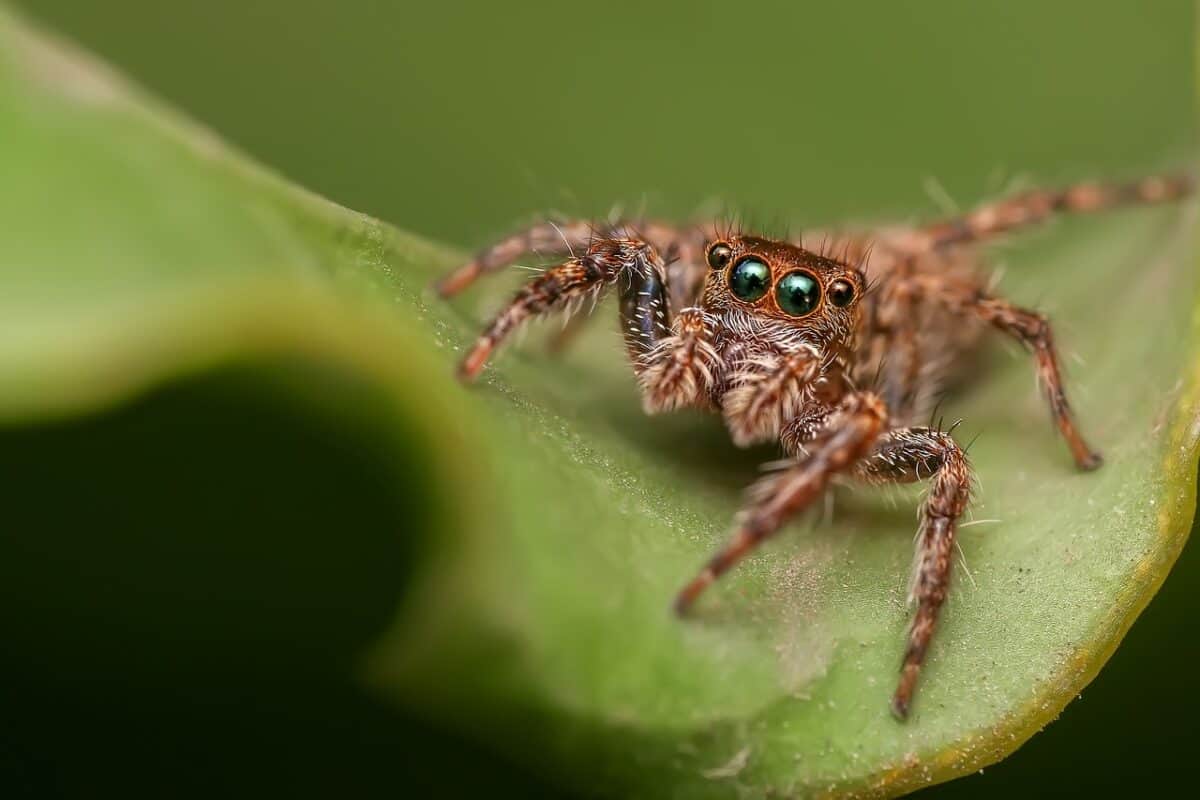Spider populations, often overlooked, play a crucial role in the ecological balance by controlling insect populations and serving as food for higher predators. However, the increase in extreme weather events due to climate change impacts these intricate creatures in numerous ways. This article explores 12 key impacts, providing a deeper understanding of how such environmental shifts may alter spider populations.
12. Habitat Destruction

Extreme weather events like hurricanes, floods, and wildfires can destroy natural habitats vital for spider survival. As these habitats get damaged or obliterated, spider populations can face decreased survival rates due to the loss of shelter and breeding grounds. This destruction leaves spiders vulnerable to predators and harsh environmental conditions, dramatically reducing their numbers.
11. Changes in Prey Availability

Spiders rely heavily on a steady prey supply, mainly consisting of insects. Extreme weather can disrupt the insect populations, either through direct mortality or by altering their breeding cycles and habitats. This fluctuation in prey availability can lead to starvation or force spiders to relocate, affecting their population stability.
10. Altered Migration Patterns

Some spider species migrate to find food or more favorable living conditions. Extreme weather conditions can alter these migration patterns, leading spiders to new environments where survival might be more challenging. This shift can cause increased competition with local species and may impact the genetic diversity of the populations.
9. Temperature Extremes

Sudden temperature shifts affect spiders since they rely on external temperatures to regulate their body functions. Extreme cold or heat can lead to increased mortality rates, altered reproduction cycles, and changes in behavior. As temperature extremes become more frequent, spider populations may struggle to adapt quickly enough to these rapid changes.
8. Impact on Reproductive Cycles

Environmental cues such as temperature and humidity play a significant role in spider reproduction. Extreme weather can disrupt these cues, leading to shifts in reproductive timing or failure to reproduce altogether. Consequently, this may result in lower offspring survival and population declines.
7. Influence on Web Construction

Spider webs are architectural marvels essential for catching prey. However, extreme weather conditions can damage or destroy webs, leading to increased energy expenditure as spiders have to rebuild. This could limit their ability to capture food efficiently, affecting their overall health and survival.
6. Spread of Diseases

Extreme weather conditions such as floods and excessive humidity can contribute to the spread of diseases among spider populations. The increased presence of pathogens and parasites can lead to higher mortality rates, weakening populations further.
5. Stress-Induced Behavior Changes

Stress from extreme weather can alter spider behavior, including feeding and mating habits. This stress may lead to reduced health and impair their ability to adapt to new challenges, potentially lowering population resilience in the face of ongoing environmental change.
4. Water Availability

Spiders, like many organisms, require a certain amount of moisture to survive. Droughts or excessive rainfall can alter water availability, impacting spider physiology and causing populations to decline if water becomes too scarce or conditions become inhospitable.
3. Changes in Vegetation Structure

The structure and type of vegetation in a given area can dramatically alter due to extreme weather events. These changes can affect the availability of suitable locations where spiders build their webs or find shelter, influencing population dynamics.
2. Interruption of Energetic Efficiency

Spiders need to balance energy intake with expenditure carefully. Extreme weather can drive up energy demands for thermoregulation or web rebuilding, thus impacting the energetic efficiency and reducing survival and reproductive success.
1. Microhabitat Challenges

Spiders often rely on microhabitats to thrive. Extreme weather can alter these small-scale environments, making them unsuitable for habitation. The resulting habitat fragmentation can isolate populations, making them vulnerable to extinction due to decreased genetic diversity and reproduction rates.
Conclusion:

The effects of extreme weather on spider populations are profound and multifaceted. As climate change continues to alter global weather patterns, it becomes increasingly important to understand these impacts to conserve spider populations and maintain ecological balance. By recognizing these challenges, we can better anticipate how ecosystems might change and take steps to mitigate potential negative effects on biodiversity.
- The Most Elusive Big Cats Roaming the American Southwest - August 20, 2025
- 13 Animals That Use Tools to Hunt - August 20, 2025
- 14 Creatures That Don not Need Eyes - August 20, 2025

